Celebrating International Jaguar Day with Preschoolers
Jaguar Day is celebrated worldwide on November 29 every year to raise awareness of the multiple threats these magnificent cats face and the critical need to protect them and their habitats to avoid extinction.
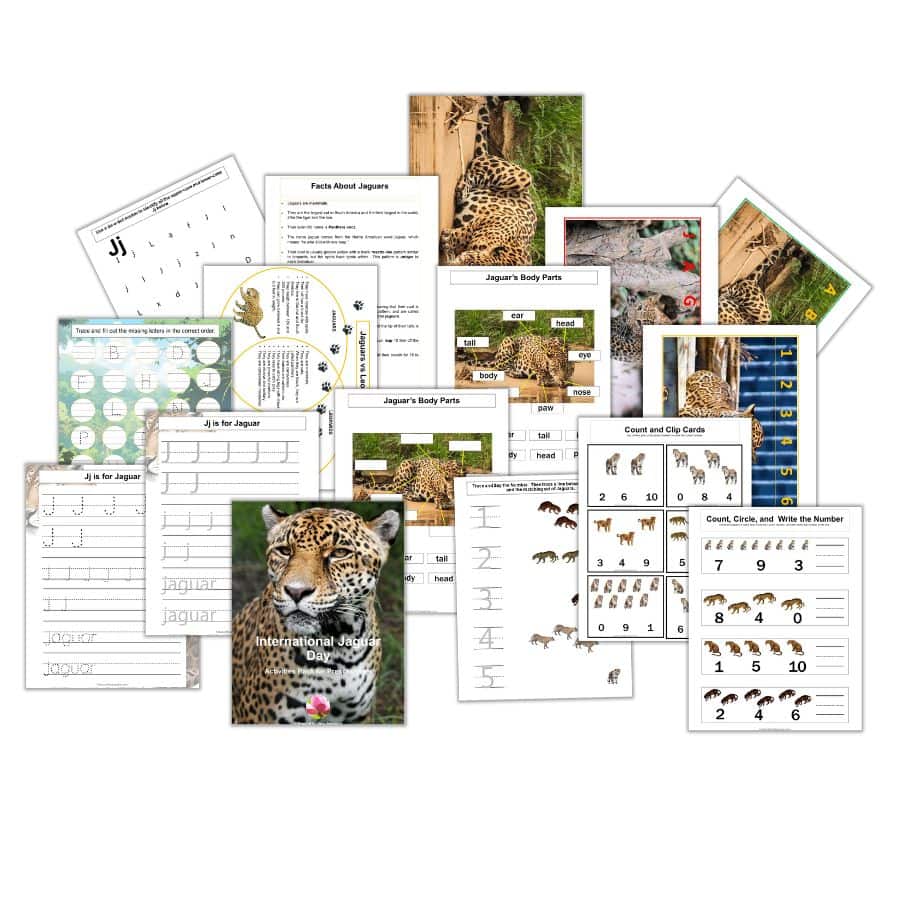
At the bottom of the post, you will find a FREE 31-page International Jaguar Day activities pack that will help you teach your preschoolers about them. It includes your preschoolers’ Literacy, Science, Math, and Fine Motor activities.
History of International Jaguar Day
The jaguar is an umbrella species and the only big cat that lives in eighteen Central and South American countries, from Argentina to Mexico. It has been protected since 1970.
In March 2018, representatives from 14 range countries gathered in New York at United Nations Headquarters to discuss the jaguar situation. This meeting called the Jaguar 2030 Forum, resulted in the creation of the Jaguar 2030 Statement.
The Jaguar 2030 Statement recognizes the importance of investing in conserving jaguars and their habitats, promoting research, managing natural resources more effectively, and investing in solutions to protect nature, among other things. It hopes to change the status of the jaguar by 2030 and proposes the creation of the International Jaguar Day.
As a result, many countries are observing the International Jaguar Day celebrations and participating in collaborative conservation initiatives, and Brazil recognized the jaguar as its symbol of biodiversity.
In 2020, the World Wildlife Federation (WWF) started a protocol to increase the jaguar population and their habitat.
Today, the United Nation’s Sustainable Development Goals and the International Jaguar Day are supported by many countries and organizations working together to protect these animals and their habitats through conservation efforts, research, resources, education, etc. Some of these organizations:
- Wildlife Conservation Society (WCS) – Protects jaguars in 13 countries.
- World Wildlife Fund (WWF) – To protect the Jaguar, WWF is developing its Regional Jaguar Strategy, launched in 2020.
- Jaguar Conservation Fund – Promotes the conservation of the jaguar, its natural prey, and its habitat.
- Panthera – Focuses on conserving the Pantanal in Brazil.
- World Wildlife Fund (WWF) – Works with local communities, governments, and partners to protect jaguars from extinction.
- Rainforest Trust – Working to safeguard jaguar landscapes across Peru, Belize, Brazil, Mexico, Colombia, Panama, and Guatemala.
- Fauna & Flora International – Working to save jaguars.
- Fundación Jaguar – Conducts genetic analysis, monitoring food sources, and creating maps of populations and cattle attacks in Costa Rica.
- Arcas – Formed by citizens trying to protect endangered species, including the jaguar, in Guatemala.
- Jaguar Conservation Network – Provides information and collaboration between researchers, conservationists, and people affected by jaguar predation on livestock.
- Panama Wildlife Conservation – Provides conservation campaigns and strategies for jaguars.
- Born Free Foundation – Helping to protect the jaguar population worldwide.
- Yaguara – Focus on conserving jaguars and other wild cats in Panama and Costa Rica.
- Operation Jaguar – A project that worked from 2019 to 2022 to combat the illegal trade of jaguars in Peru, Bolivia, Guyana, and Suriname.
Other organizations working on conservation projects for jaguars and other big cats are:
- Cat Action Treasury (CAT) – Created in 1995 to conserve the world’s 36 wild cat species.
- Cat Survival Trust – A sanctuary for wild cats in the United Kingdom.
- Northern Jaguar Project – Protecting the world’s northernmost jaguars.
- OSA Conservation – working on preserving the Osa Peninsula’s biodiversity and wild cat conservation.
- Panther Ridge Conservation Center – A conservation center that provides a home for some of the world’s most endangered big cats in Florida.
- Primero Conservation – Works on carnivore conservation and management for jaguars, ocelots, pumas, and cohabitating wildlife.
- The Wildcat Sanctuary – Provides a natural sanctuary to wild cats in need.
- Tiger Haven – A rescue facility and sanctuary for big cats.
- Universidad Nacional Autonoma de Mexico: Instituto de Ecologia: Laboratorio del Ecologia y Conservacion de Fauna Silvestre – Provides research and conservation plans and the creation of protected areas.
- University of Arizona: Wild Cat Research and Conservation – Conserving the 36 species of wild cats, their prey, and their habitat.
Jaguar Facts
- Jaguars are mammals.
- They are the largest cat in South America and the third largest in the world, after the tiger and the lion.
- Their scientific name is Panthera onca.
- The name jaguar comes from the Native American word jaguar, which means “he who kills with one leap.”
- Their coat is usually golden yellow with a black rosette-like pattern similar to leopards, but the spots have spots within. This pattern is unique to each individual.
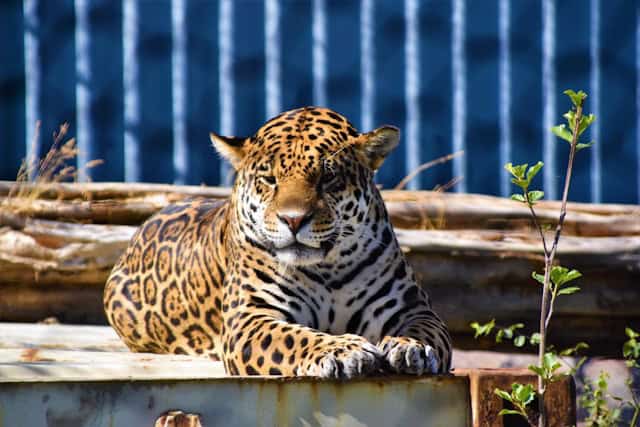
- Six of every 100 jaguars suffer from melanism, meaning that their coat is black instead of golden, with their typical rosette pattern, and are called panthers. Some can be all white and are called albino jaguars.
- They are very muscular, have small round ears, and the tip of their tails is black.
- They have a big head, strong legs, and big paws. They can leap 10 feet off the ground and climb trees easily.
- They enjoy water, are excellent swimmers, and hold their breath for 15 to 20 minutes.
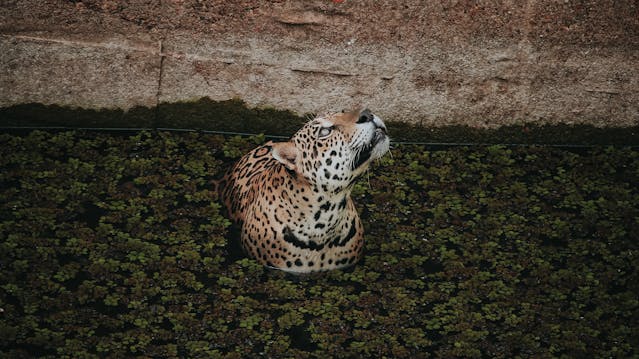
- They can reach a speed of 50 miles per hour running or swimming.
- Both male and female jaguars have a roar, called a saw, because it sounds like a rusty hand saw cutting a piece of wood.
- They are carnivores and eat over 80 different species of land animals and fish species.
- Jaguars have very powerful jaws and huge teeth and bite more forcefully than lions. They can crack open a tortoise’s shell and a caiman’s skin.
- Their tongues have sharp-pointed bumps called papillae, used to scrape the meat off the bones.
- They are nocturnal, meaning that they hunt at night. They stalk their prey, then take a big leap to bring it down and bite it, usually in the back of the skull. Then, they drag their prey up a tree to keep it safe.
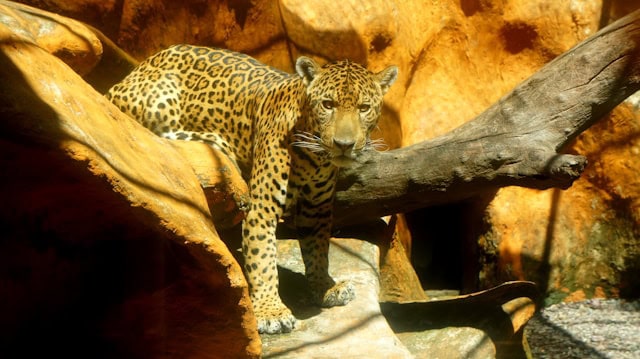
- Male jaguars are about 10-20% larger than females. On average, jaguars weigh between 124 and 300 pounds and are 4 to 6.5 feet long.
- They can be found in Central and South America. Half of them live in Brazil’s rainforest and tropical wetlands called Pantanal. They can also be found in Peru, Bolivia, Costa Rica, Ecuador, Colombia, Guyana, Suriname, Argentina, Paraguay, Venezuela, and Mexico.
- They are solitary, elusive, and intelligent, especially females.
- They sleep during the day, resting on tree branches.
- Male jaguars mark their territory by clawing trees, urine, and feces. They also aggressively protect their territory and the females that live within it if another male enters it.
- They are not dangerous to humans unless they feel threatened or trapped.
- Jaguars are apex predators and can only be hunted by humans. The only animals that can bring them down are caimans and anacondas, and only if they are young, old, or sick.
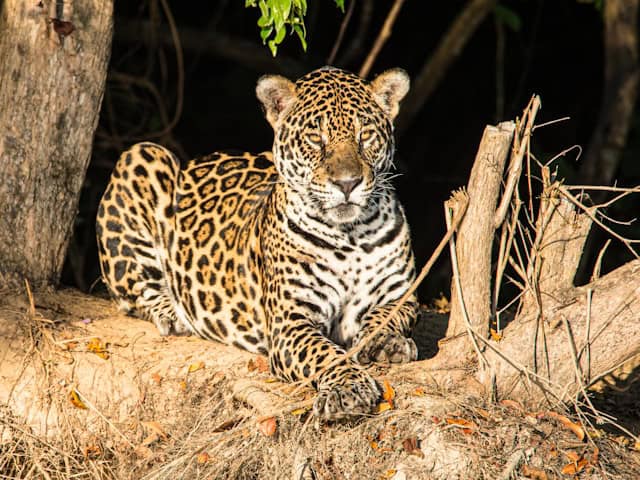
- They are an umbrella species for biodiversity conservation, and their presence is crucial for preserving and maintaining Indigenous territories and a balanced habitat by preventing the overpopulation of other species and dispersing seeds, which helps regenerate forests.
- Jaguars reproduce all year round. Female jaguars usually have a litter of one to four cubs that are born with their eyes closed. They are nursed for 5 to 6 months and stay with their mother for one to two years.
- They can live between 12 to 15 years in the wild and up to 20 years in captivity.
- They are classified as a threatened species in the IUCN Red List and have been under protection since the 1970s due to climate and ecosystem changes, loss of habitat, poaching, conflicts with humans, illegal trading, and being hunted.
- They are already extinct in El Salvador and Uruguay.
How to Celebrate International Jaguar Day
Regardless of where you live, you can celebrate the International Jaguar Day. Some ideas are:
- Learn about the jaguar, the threats it faces, and the conservation efforts, and share the information.
- Using different approaches, teach your preschoolers about jaguars and their role in a healthy ecosystem.
- Organize an exhibition with art projects about jaguars done by your preschoolers and their families.
- Invite your preschoolers to dress as jaguars or in jaguar-inspired clothes on International Jaguar Day and have a parade around the school or in your neighborhood.
- Organize fundraising events such as bake sales, art expositions, and documentary presentations, and donate the funds to an organization protecting the jaguars.
- Adopt a jaguar through the World Wildlife Federation (WWF), and invite your children, family, and friends to do the same.
- Find out if your local zoo carries jaguars, and take your preschoolers to see them or invite your families to take them.
- Watch documentaries such as The Jaguar Spirit, a short documentary about a personal journey that uncovers how Bolivia became the center of the illegal jaguar trade.
- Participate in educational events such as conferences & workshops.
- Use social media to create awareness about the jaguars’ situation and International Jaguar Day.
- Suppose you can travel to see jaguars in the wild. The Natural Habitat Adventures to Brazil’s Pantanal can give you firsthand experience in the areas where jaguars live.
Jaguar-related Books
I don’t know any fictional books about Jaguars, but I like the nonfiction ones below. You can find these books at your local library, used bookstore, or on Amazon. I added my Amazon links to the titles to make it easier for you to find the pages.
- Facts About the Jaguar by Lisa Stratton is an educational children’s picture book that presents facts, full-color photographs, and carefully chosen words to teach children about the Jaguar.
- Amazing Animals: Jaguars by Valerie Bodden uses beautiful photos paired with accessible text to examine the jaguar’s appearance, habitat, behaviors, and life cycle.
- A Book About Jaguars for Kids by Dawon Seashore offers a closer look at these jaguars’ physical characteristics, habitat, diet, family, and daily life.
- Jaguars by Julie Gidone describes the jaguar and explains that even though it is a hunter, it is also endangered.
- Meet the Jaguar by David Atkins is a nonfiction book for children about jaguars, filled with cool pictures and interesting facts about these fascinating creatures.
- Jaguar (Panthera Onca): Endangered Species by Tommy Lee Grey is a notebook journal about the jaguar and the situations affecting its survival.
- Jaguar Jungleberry Jamboree by Helen H. Moore is a humorous story designed to help young children recognize the letter J and the sound it makes.
- Jaguar Picture with Activity Book by Marc K. Walker shows interesting and lovely pictures of jaguars and contains word searches, mazes, coloring pages, and fun puzzles.
Pin It For Later
If you are in a rush and don’t have time to read the post and download the printable but want to save it, pin it to one of your Pinterest boards for later.

Use this International Jaguar Day to teach your children everything you can about these amazing mammals so they learn about them, know the differences between jaguars and leopards, and plant the desire to become their protectors and advocates in your children.
Suppose we don’t act now to protect jaguars and other endangered species. In that case, other people sharing their environments, including ours, will also be affected, and we will continue contributing to an unbalanced and sick planet.
I hope you enjoy these ideas and that they help you have fun with your preschoolers during the International Jaguar Day celebration. To get the FREE International Jaguar Day pack, click on the link below and enter your information for an immediate download.
Be happy, safe, and creative. I wish you well.
Love,

P.D. Please let me know how this celebration went, what ideas you used, and which ones you came up with. I would like to know how I can help you better.

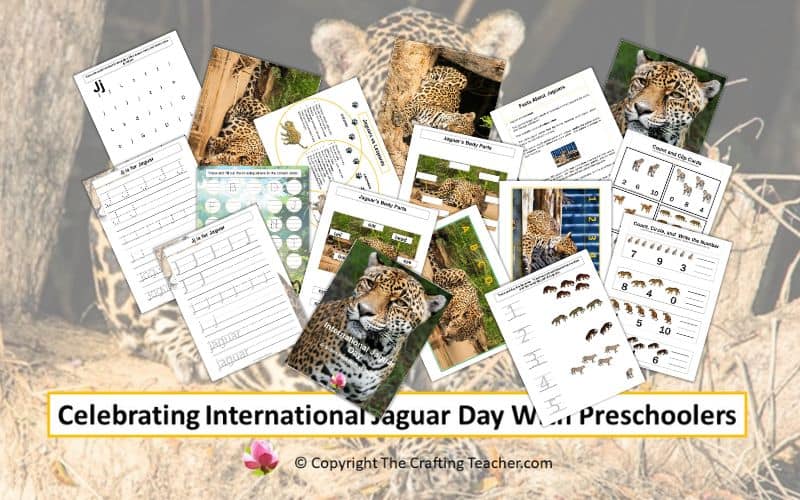

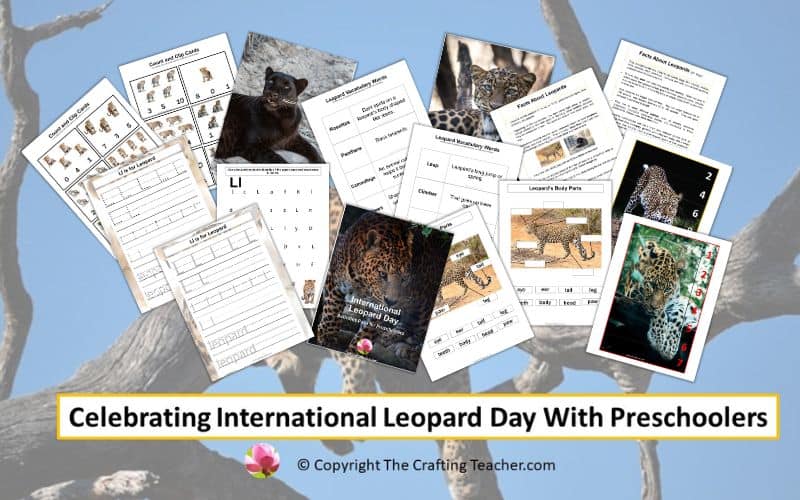


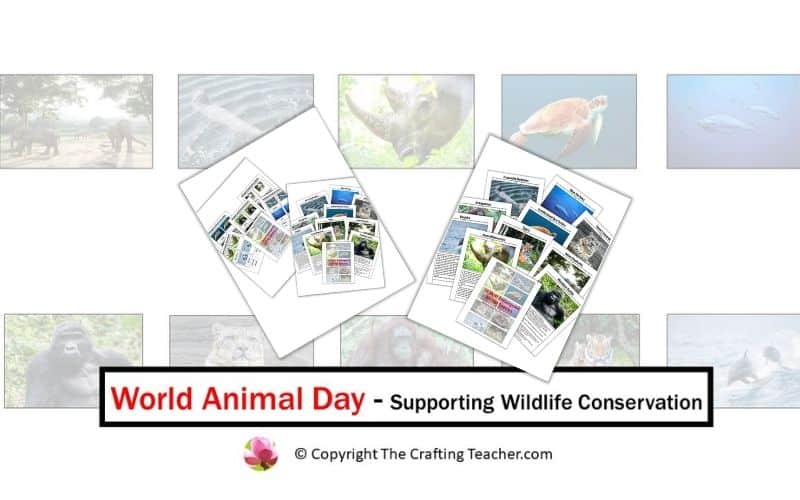
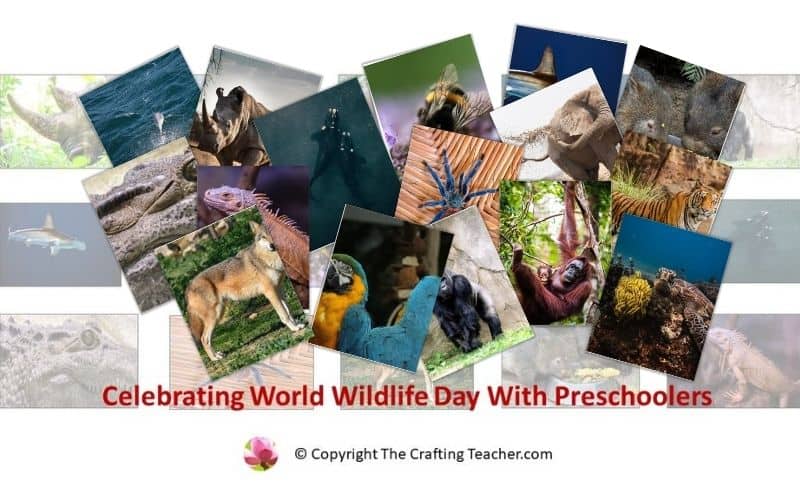
I think this site holds some really good information for everyone : D.
Thank you so much Jordan. That is exactly my goal. I appreciate your feedback.